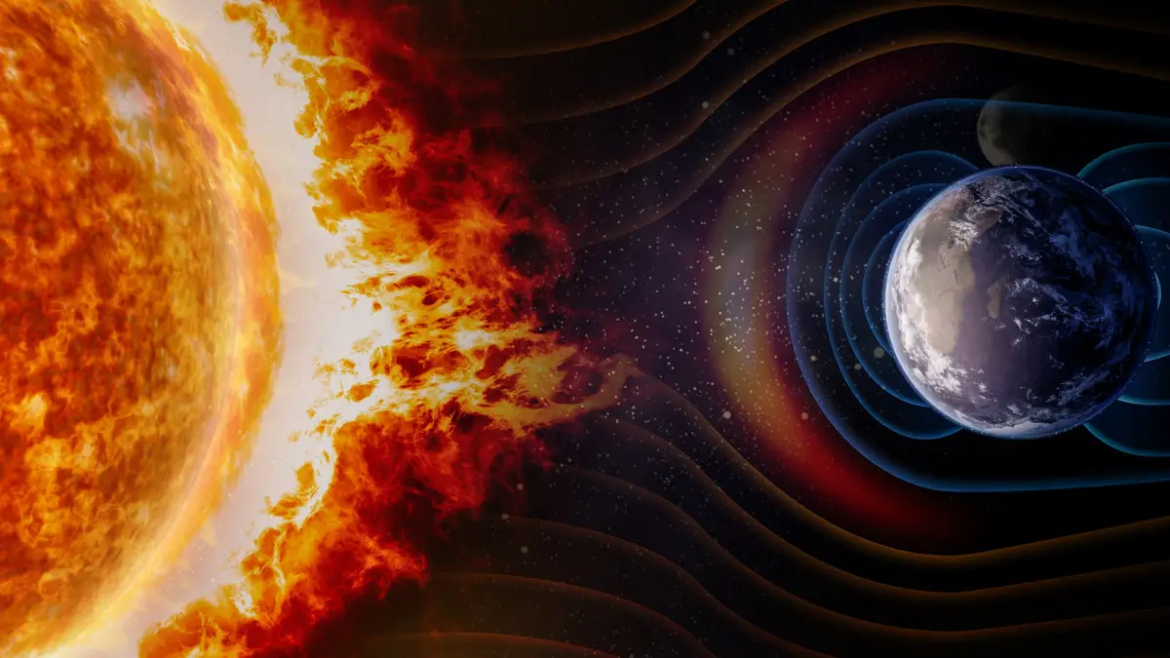American scientists have warned that a big solar storm is heading towards Earth, which is expected to disrupt electronic communications and satellite systems. This storm comes after several strong solar flares, raising concerns about its impact on technology, especially in India. The Indian Space Research Organisation (ISRO) is preparing to protect important infrastructure, and experts stress the importance of being cautious in the coming days.
What are solar storms
Solar storms, which involve sudden explosions of particles, energy, and magnetic fields from the Sun, can disrupt Earth’s magnetosphere. As per the media report, Dr. Annapurni Subramanian, Director of the Indian Institute of Astrophysics, stated, “The (solar) flare which occurred a few days ago is similar in terms of strength to the one which occurred in May.” These flares are known to cause geomagnetic storms that can lead to radio blackouts and power outages on Earth.
Recent media reports highlight a series of powerful solar flares emitted by the Sun, including an X7.1 flare on October 1 and an even stronger X9.0 flare on October 3. NASA captured these flares using its Solar Dynamics Observatory, emphasizing their potential to disrupt communication systems. NOAA classified the X9.0 flare as an R3-strength flare, indicating a “strong” potential for radio blackouts.
How is ISRO monitoring and preparing for it?
As the storm approaches, ISRO has advised Indian satellite operators to take necessary precautions. Dr. Subramanian mentioned, “We expect to do something tonight or tomorrow night to see if anything is happening.” She added that while predictions suggest possible interference, “the predictions are that it can happen or it may not happen; we will have to wait and see.”
The strong solar storm in May had already created aurora displays across the Northern Hemisphere, highlighting the visual effects of such events. The upcoming storm poses risks, including voltage fluctuations in power grids, particularly in areas with geomagnetic latitudes above 50 degrees. The storm is expected to reach Earth between October 4 and October 6, bringing potential disruptions and challenges.
The approaching geomagnetic storm is expected to affect various technologies. High-frequency radio communications may experience signal disruptions, while satellite systems could face increased drag, impacting their stability and orientation. GPS systems may also encounter outages and inaccuracies, complicating navigation for industries that depend on precise location services. Despite these potential challenges, the storm could produce stunning auroras that may be visible further south than usual.
NOAA has noted that geomagnetic storms can lead to beautiful light displays when solar wind carrying charged particles interacts with Earth’s atmosphere, producing vibrant colors. The auroras could be visible across northern states and parts of the lower Midwest in the U.S. As the solar storm nears, its implications for electronic communications and satellite operations are becoming clearer. Both Indian scientists and ISRO are closely monitoring the situation to minimize risks. While the storm may bring disruptions, the potential for breathtaking auroras offers a captivating aspect of this cosmic event. Staying informed and prepared is essential for industries and the public as they navigate the challenges posed by this significant solar phenomenon.
👉 Click here to read the latest Gujarat news on TheLiveAhmedabad.com



